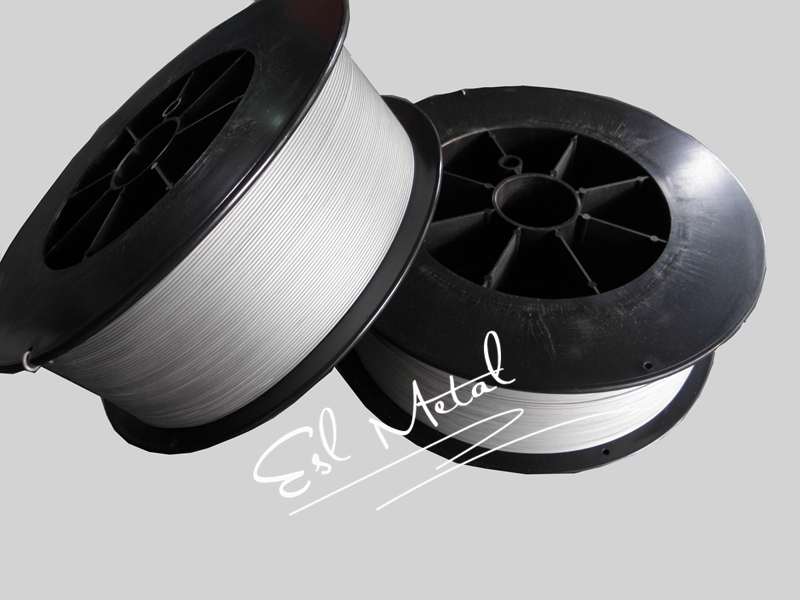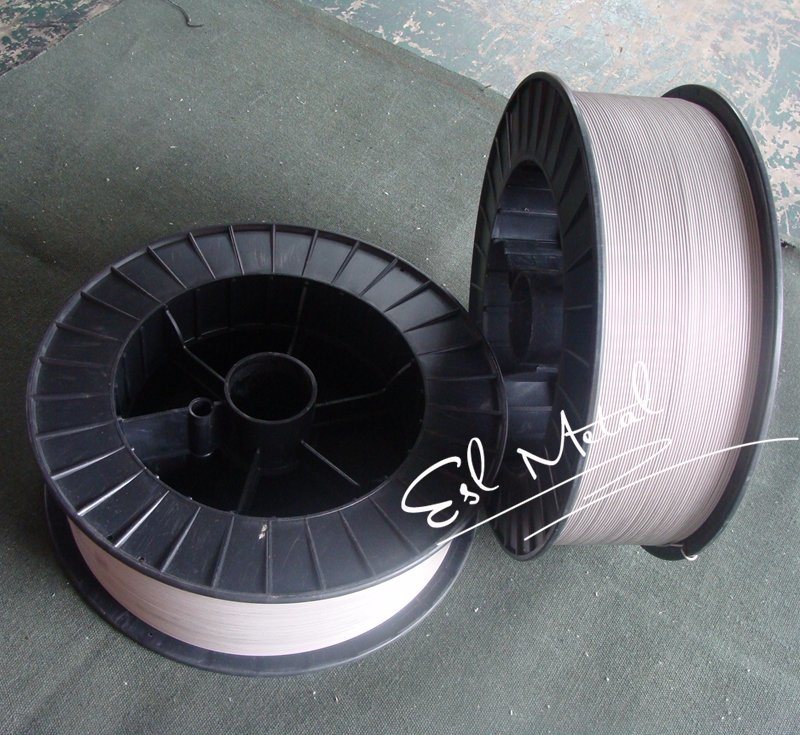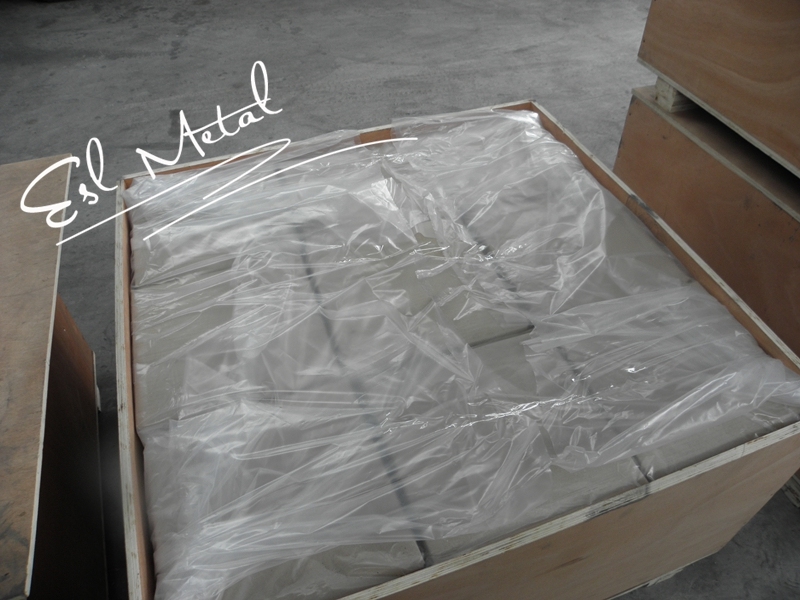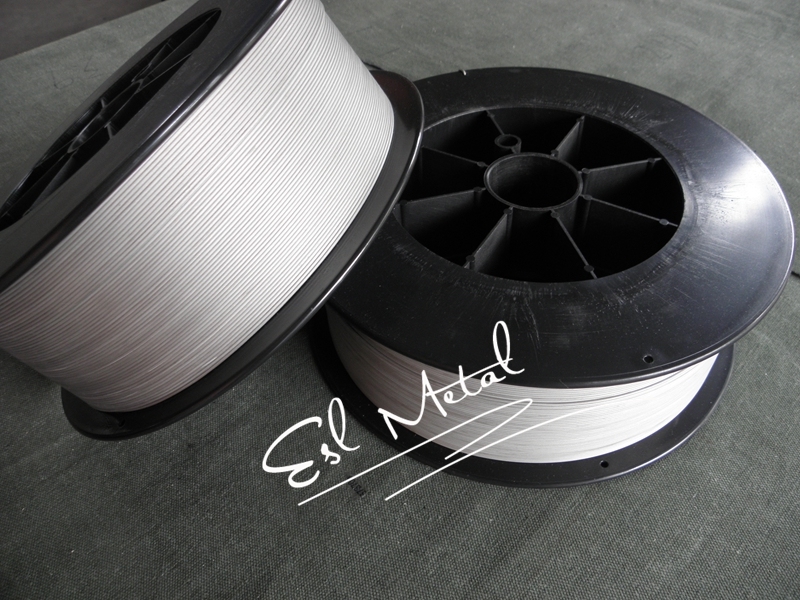Erti-2 Aws A5.16 Titanium MIG Wire for Welding
Titanium grade 2 (ERTi-2) is the "workhorse" of titaniums in the commercially pure titaniums  available.  It is normally used in applications such as pressure vessles, pipes, columns, tanks, shafts, Valves, and fittings.  As with all titanium alloys, ERTi-2 is extremely reactive above 1000°F and extra precaution must be taken to have a successful weld.  ERTi-2 can be welded by the GTAW, GMAW and plasma arc processes
· STANDARD of Grade 2 Titanium Wire
 AWS A5.16; ASTM B863; AMS 4951; AMS 4954; AMS 4956,etc.
· SPECIFICATION
Starting from dia0.80mm to dia4.0mm.
· SURFACE
Pickled , Polished
· CHEMICAL COMPONENT
   C 0.03        O 0.08 - 0.16        N 0.015       H 0.008        Fe 0.12        Ti rem.
· APPLICATIONS of Grade 2 Titanium Wire
Titanium wire is typically used in welding,Titanium grade 1Â Welding rods is used for gas-tungsten-arc-weldingÂ
(GTAW), gas-metal-arc-welding (GMAW) and plasma-arc-welding (PAW).And also used in Spring,medical.seawater and brackish water heat exchanger, chemical process heat exchangers, pressure vessels and piping systems, pulp bleaching systems, air pollution control scrubbers, and electro chemical and chemical storage tanks. These grades also have some uses in the aerospace industry.
· TYPICAL MECHANICAL PROPERTIES
   Tensile strength: 50000psi
   Yield strength:40000psi
   Elongation: 20%
· QUALITY & TEST of Grade 2 Titanium Wire
   Strict test to ensure our quality,The third Party Inspection acceptable,EN 10204 3.1 is available
    (Quality Certification ISO9001-2008)
· PACKAGING:
   Straight Lengths: 18", 24", 36" and custom
   Spool: 12" diameter standard spool
   Coil: by meter or kgs
   Flag Tagging Available
· CLASSIFICAZIONE
AWS A5.16Â Â Â Â Â Â ERTI-2Â Â Â Â Â Â AMS4951Â Â Â Â UNS R50120
· WELDING TECHNIQUEÂ
 In addition to clean joints and weld wire, proper parameters, and proper inert gas shielding, welder technique requires attention when titanium is being welded. Improper technique can be a source of weld contamination.  Before starting an arc in welding titanium, it is good practice to pre-purge torch, trailing shield and backup shield to be sure all air is removed. Whenever possible, high frequency arc starting should be used. Scratch starting with tungsten electrodes is a source of tungsten inclusions in titanium welds. On extinguishing the arc, the use of current downslope and a contactor, controlled by a single foot pedal, is encouraged. Torch shielding should be continued until the weld metal cools below 800 degrees F. Secondary and backup shielding should also be continued. A straw or blue color on the weld is indicative of premature removal of shielding gas. Preheating is not generally needed for titanium shop welds. However, if the presence of moisture is suspected, due to low temperature, high humidity, or wet work area, preheating may be necessary. Gas torch heating (slightly oxidizing flame) of weld surfaces to about 150 degrees F. is generally sufficient to remove moisture. The arc length for welding titanium without filler metal should be about equal to the electrode diameter. If filler metal is added, maximum arc length should be about 1-1/2 times the electrode diameter. Filler wire should be fed into the weld zone at the junction of the weld joint and arc cone. Wire should be fed smoothly and continuously into the puddle. An intermittent dipping technique causes turbulence and may result in contamination of the hot end of the wire on removal from the shield. The contaminants are then transferred to the weld puddle on the next dip. Whenever the weld wire is removed from the inert gas shielding, the end should be clipped back about 1/2- inch to remove contaminated metal. Interpass temperatures should be kept low enough, such that additional shielding is not required. Cleaning between passes is not necessary if the weld bead remains bright and silvery. Straw or light blue weld discoloration can be removed by wire brushing with a clean stainless steel wire brush. Contaminated weld beads, as evidenced by a dark blue, gray or white powdery color, must be completely removed by grinding. The joint must then be carefully prepared and cleaned before welding again.   



Â
Titanium grade 2 (ERTi-2) is the "workhorse" of titaniums in the commercially pure titaniums  available.  It is normally used in applications such as pressure vessles, pipes, columns, tanks, shafts, valves, and fittings.  As with all titanium alloys, ERTi-2 is extremely reactive above 1000°F and extra precaution must be taken to have a successful weld.  ERTi-2 can be welded by the GTAW, GMAW and plasma arc processes
· STANDARD of Grade 2 Titanium Wire
 AWS A5.16; ASTM B863; AMS 4951; AMS 4954; AMS 4956,etc.
· SPECIFICATION
Starting from dia0.80mm to dia4.0mm.
· SURFACE
Pickled , Polished
· CHEMICAL COMPONENT
   C 0.03        O 0.08 - 0.16        N 0.015       H 0.008        Fe 0.12        Ti rem.
· APPLICATIONS of Grade 2 Titanium Wire
Titanium wire is typically used in welding,Titanium grade 1Â Welding rods is used for gas-tungsten-arc-weldingÂ
(GTAW), gas-metal-arc-welding (GMAW) and plasma-arc-welding (PAW).And also used in Spring,medical.seawater and brackish water heat exchanger, chemical process heat exchangers, pressure vessels and piping systems, pulp bleaching systems, air pollution control scrubbers, and electro chemical and chemical storage tanks. These grades also have some uses in the aerospace industry.
· TYPICAL MECHANICAL PROPERTIES
   Tensile strength: 50000psi
   Yield strength:40000psi
   Elongation: 20%
· QUALITY & TEST of Grade 2 Titanium Wire
   Strict test to ensure our quality,The third Party Inspection acceptable,EN 10204 3.1 is available
    (Quality Certification ISO9001-2008)
· PACKAGING:
   Straight Lengths: 18", 24", 36" and custom
   Spool: 12" diameter standard spool
   Coil: by meter or kgs
   Flag Tagging Available
· CLASSIFICAZIONE
AWS A5.16Â Â Â Â Â Â ERTI-2Â Â Â Â Â Â AMS4951Â Â Â Â UNS R50120
· WELDING TECHNIQUEÂ
 In addition to clean joints and weld wire, proper parameters, and proper inert gas shielding, welder technique requires attention when titanium is being welded. Improper technique can be a source of weld contamination.  Before starting an arc in welding titanium, it is good practice to pre-purge torch, trailing shield and backup shield to be sure all air is removed. Whenever possible, high frequency arc starting should be used. Scratch starting with tungsten electrodes is a source of tungsten inclusions in titanium welds. On extinguishing the arc, the use of current downslope and a contactor, controlled by a single foot pedal, is encouraged. Torch shielding should be continued until the weld metal cools below 800 degrees F. Secondary and backup shielding should also be continued. A straw or blue color on the weld is indicative of premature removal of shielding gas. Preheating is not generally needed for titanium shop welds. However, if the presence of moisture is suspected, due to low temperature, high humidity, or wet work area, preheating may be necessary. Gas torch heating (slightly oxidizing flame) of weld surfaces to about 150 degrees F. is generally sufficient to remove moisture. The arc length for welding titanium without filler metal should be about equal to the electrode diameter. If filler metal is added, maximum arc length should be about 1-1/2 times the electrode diameter. Filler wire should be fed into the weld zone at the junction of the weld joint and arc cone. Wire should be fed smoothly and continuously into the puddle. An intermittent dipping technique causes turbulence and may result in contamination of the hot end of the wire on removal from the shield. The contaminants are then transferred to the weld puddle on the next dip. Whenever the weld wire is removed from the inert gas shielding, the end should be clipped back about 1/2- inch to remove contaminated metal. Interpass temperatures should be kept low enough, such that additional shielding is not required. Cleaning between passes is not necessary if the weld bead remains bright and silvery. Straw or light blue weld discoloration can be removed by wire brushing with a clean stainless steel wire brush. Contaminated weld beads, as evidenced by a dark blue, gray or white powdery color, must be completely removed by grinding. The joint must then be carefully prepared and cleaned before welding again.   



Â
ZHEJIANG KINGSIR VALVE CO., LTD. , https://www.kingsirvalves.com